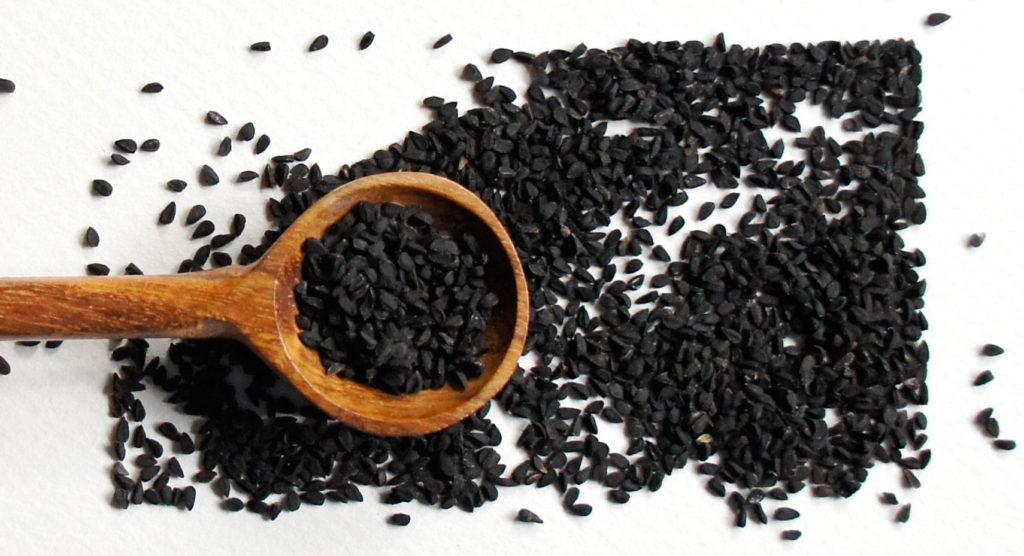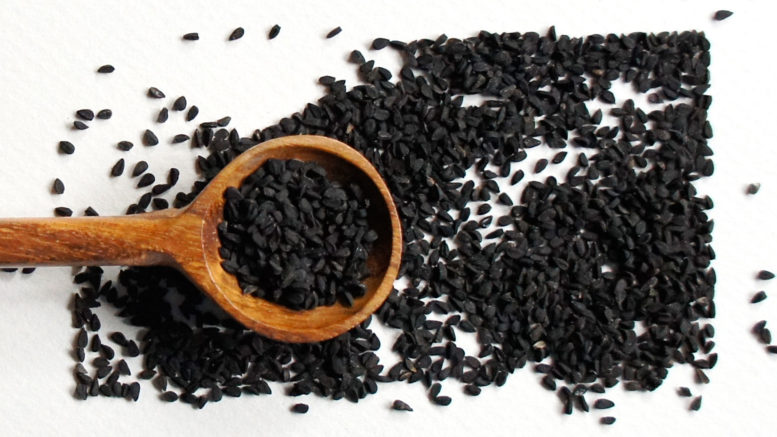
Pronounce it: Ny-jellah
One of the oldest spices known to be used, nigella seeds (n. sativa) were found in Tutankhamun’s tomb and are mentioned in the Bible’s Old Testament, although their use is not clear. The tiny black seeds have a slightly bitter taste with some of the pungency of onion but also offer many other subtle nuances of flavour.
Their appearance means they are commonly called black onion seed but they have nothing to do with the onion family. They are an original and non-challenging spice with which to experiment.
Availability
Easily found online and stocked in small bottles by bigger supermarkets: in ethnic shops nigella seeds might be called kalonji.
Store it
Kept cool and dark in an airtight container, nigella seeds have a very long life.
Discard if there is a musty rather than sharp smell.
Cook it
Nigella seeds are not generally included in cooking except as a topping for Indian naan breads. North African bakers often knead them into white breads, so there are two clues on which to base some experimenting with more familiar cookery, perhaps as an ingredient in pancakes or savoury scones.
Once you are familiar with the taste, the black dots add interest as a finishing touch to plain rice and to vegetables, especially such sweet ones as carrots and parsnips. They can also be used in salad dressings and are especially good on a simple, onion-free tomato salad. They add interest to all egg dishes as a sprinkle, from poached and boiled to scrambled and fried and are good with cheese and cheese dishes, too.
For more profound flavours, dry roast or microwave the seeds before use.

Be the first to comment on "Nigella (seed)"